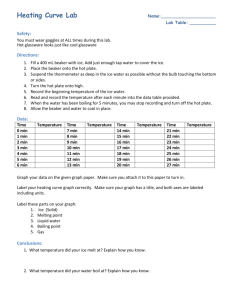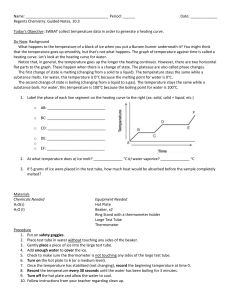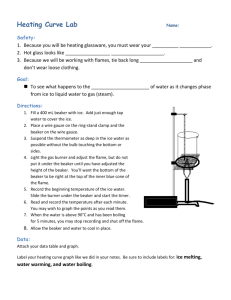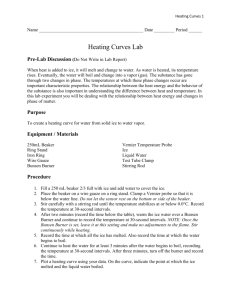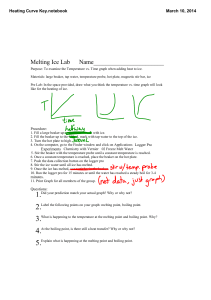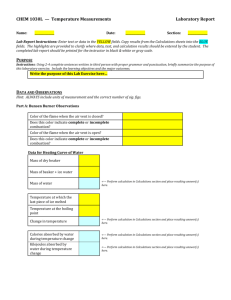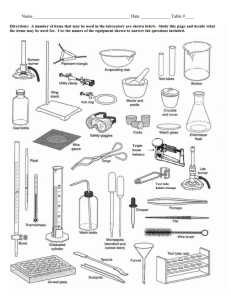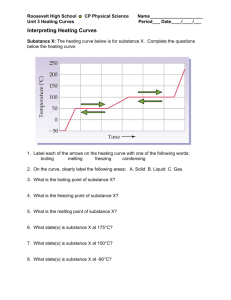Heating Curve of Water Lab: Experiment & Analysis
advertisement
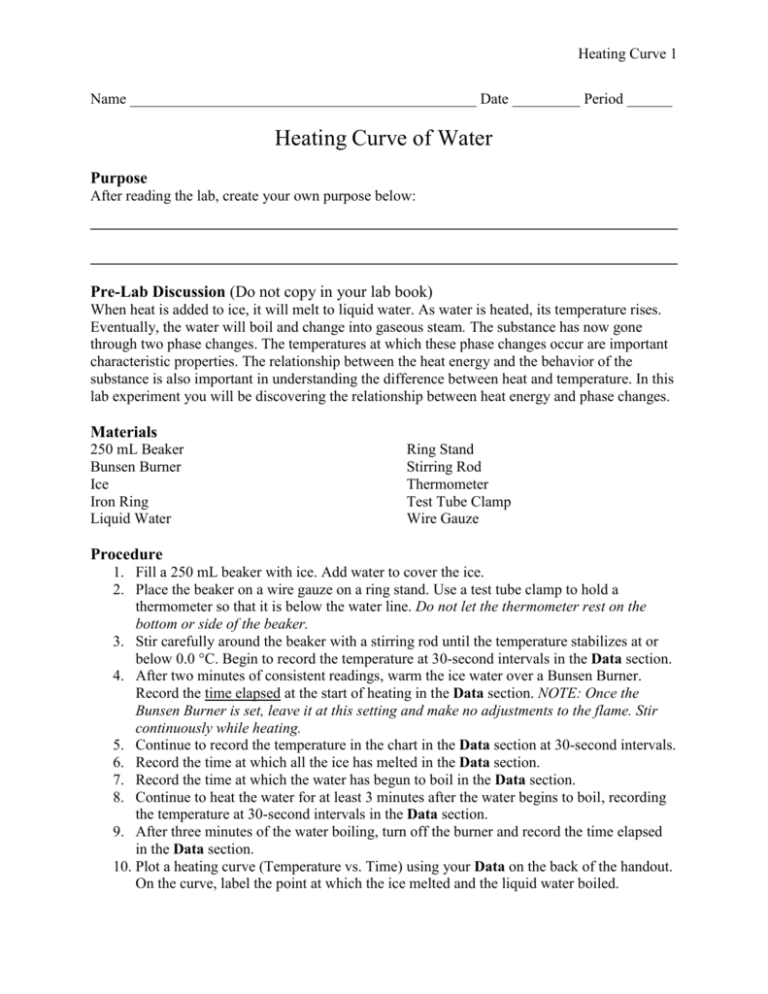
Heating Curve 1 Name ______________________________________________ Date _________ Period ______ Heating Curve of Water Purpose After reading the lab, create your own purpose below: ______________________________________________________________________________ ______________________________________________________________________________ Pre-Lab Discussion (Do not copy in your lab book) When heat is added to ice, it will melt to liquid water. As water is heated, its temperature rises. Eventually, the water will boil and change into gaseous steam. The substance has now gone through two phase changes. The temperatures at which these phase changes occur are important characteristic properties. The relationship between the heat energy and the behavior of the substance is also important in understanding the difference between heat and temperature. In this lab experiment you will be discovering the relationship between heat energy and phase changes. Materials 250 mL Beaker Bunsen Burner Ice Iron Ring Liquid Water Ring Stand Stirring Rod Thermometer Test Tube Clamp Wire Gauze Procedure 1. Fill a 250 mL beaker with ice. Add water to cover the ice. 2. Place the beaker on a wire gauze on a ring stand. Use a test tube clamp to hold a thermometer so that it is below the water line. Do not let the thermometer rest on the bottom or side of the beaker. 3. Stir carefully around the beaker with a stirring rod until the temperature stabilizes at or below 0.0 °C. Begin to record the temperature at 30-second intervals in the Data section. 4. After two minutes of consistent readings, warm the ice water over a Bunsen Burner. Record the time elapsed at the start of heating in the Data section. NOTE: Once the Bunsen Burner is set, leave it at this setting and make no adjustments to the flame. Stir continuously while heating. 5. Continue to record the temperature in the chart in the Data section at 30-second intervals. 6. Record the time at which all the ice has melted in the Data section. 7. Record the time at which the water has begun to boil in the Data section. 8. Continue to heat the water for at least 3 minutes after the water begins to boil, recording the temperature at 30-second intervals in the Data section. 9. After three minutes of the water boiling, turn off the burner and record the time elapsed in the Data section. 10. Plot a heating curve (Temperature vs. Time) using your Data on the back of the handout. On the curve, label the point at which the ice melted and the liquid water boiled. Heating Curve 2 Data Time Elapsed (minutes : seconds) Beaker Temperature (°C) Time Elapsed (minutes : seconds) 0:00 13:00 0:30 13:30 1:00 14:00 1:30 14:30 2:00 15:00 2:30 15:30 3:00 16:00 3:30 16:30 4:00 17:00 4:30 17:30 5:00 18:00 5:30 18:30 6:00 19:00 6:30 19:30 7:00 20:00 7:30 20:30 8:00 21:00 8:30 21:30 9:00 22:00 9:30 22:30 10:00 23:00 10:30 23:30 11:00 24:00 11:30 24:30 12:00 25:00 12:30 25:30 Beaker Temperature (°C) Heating Start Time___________________ Ice Melting Time_____________________ Heating End Time____________________ Water Boiling Time___________________ Heating Curve 3 Questions 1. What was happening to the H2O when the lines on the graph were mostly flat? What kind of energy was being added to the system? _______________________________________________________________________ _______________________________________________________________________ _______________________________________________________________________ 2. What was happening to the H2O when the lines on the graph were mostly sloped? What kind of energy was being added to the system? _______________________________________________________________________ _______________________________________________________________________ _______________________________________________________________________ 3. Was the energy flow into the beaker constant? How did you know? Can you make a useful heating curve if the energy flow is not constant? Why or why not? _______________________________________________________________________ _______________________________________________________________________ _______________________________________________________________________ 4. Did this activity involve a chemical change? Explain how you know. _______________________________________________________________________ _______________________________________________________________________ _______________________________________________________________________ Conclusion Based on your heating curve, determine the melting and boiling points of water. Does this match the accepted values (0°C for melting and 100°C for boiling)? What sources of error (2+) are there in the experiment that may keep you from having the perfect melting and boiling points? _____________________________________________________________________________ _____________________________________________________________________________ _____________________________________________________________________________ _____________________________________________________________________________ _____________________________________________________________________________ _____________________________________________________________________________ Heating Curve 4
